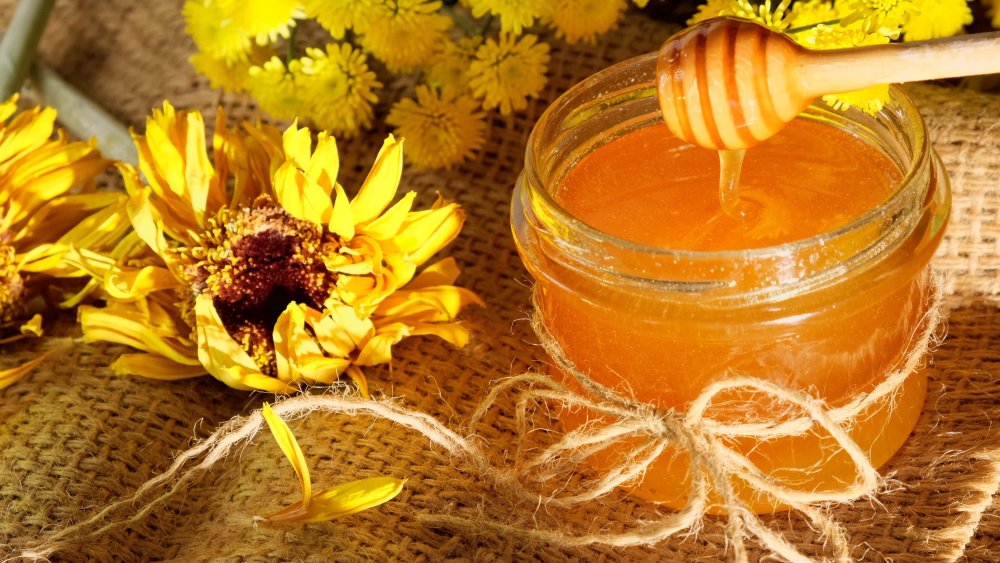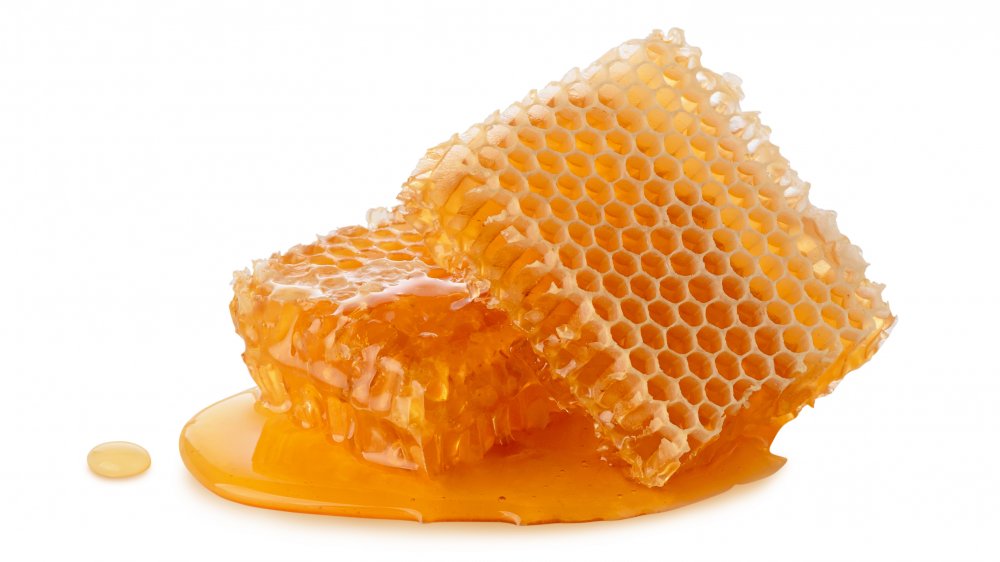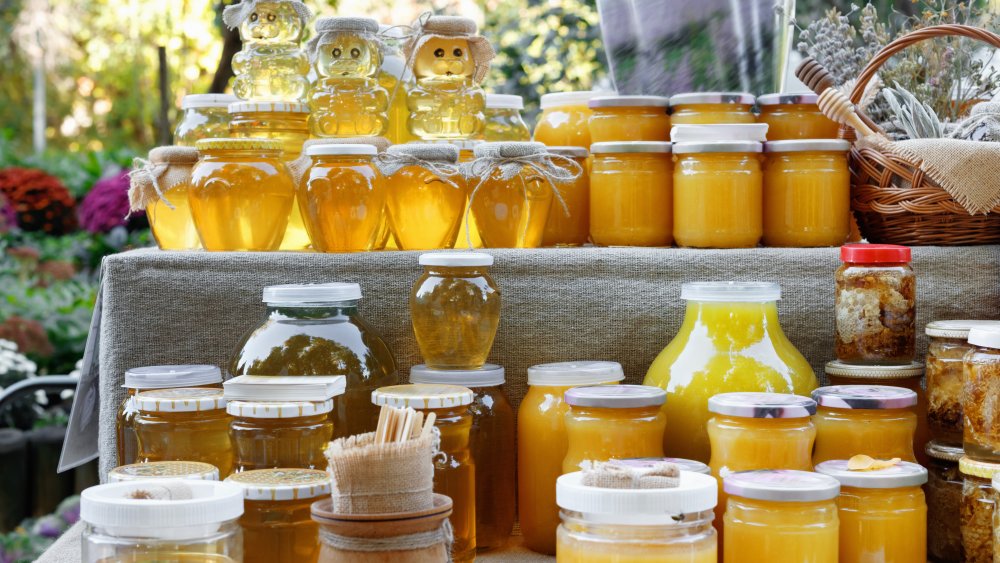Why You Should Think Twice Before Eating Honey
A day without a friend is like a pot without a single drop of honey inside. - Winnie the Pooh
Perhaps Pooh said it best – there's a lot to love about honey. And boy do we love it; in 2018, the U.S. per capita consumption of honey was about 1.4 pounds (via Statista).
Spanning the globe, honey has been considered both food and medicine for millennia. The earliest recorded evidence of gathering honey from wild bee colonies dates back to 6,000 B.C. in Valencia, Spain – as depicted in a rock painting of a honey-hunter raiding a hive (via Smithsonian Magazine).
Why is honey so cherished? It's not just deliciously sweet; the liquid gold is a good source of antioxidants and micronutrients, and is touted for its ability to suppress coughs, fight bacterial infections, improve athletic performance, and aid seasonal allergies (via Spoon University). And, nutritionally speaking, unprocessed, raw honey may contain vitamins, minerals, proteins, and disease-fighting antioxidants that, hypothetically, make it more nutritious than granulated white sugar (via Everyday Health).
So why think twice before dropping a spoonful in your tea?
Let's discuss the birds and bees
Bees pollinate one-third of the food we eat, from fruits and vegetables to seeds, nuts, and even coffee (via The Bee Conservancy). Honeybees, in particular, play a vital role in agriculture by contributing over $15 billion to the value of U.S. crop production. But here's the rub, each year, bees are dying off, and the U.S. honeybee population has declined by 40 percent (via the Bee Informed Partnership).
Turns out, bees need honey too. The sweet stuff nourishes bees with carbohydrates, essential nutrients, antioxidants, and natural antibiotics. Plus, bees store honey so they can survive cold winters when honey production dies down (via Healthline). When honey is taken from the hive, beekeepers replace it with sucrose or high-fructose corn syrup, which don't offer the same beneficial nutrients found in honey and aren't nearly as nutritious as pollen and nectar from wild plants (via Washington Post).
Thankfully, there are efforts being made by small-scale beekeepers to preserve the mutually beneficial relationship we have with our airborne friends (via The Guardian). These include balanced beekeeping, where the emphasis is on bee welfare, natural beekeeping, where there's little to no management of the hive, and little to no honey is taken, and conservation beekeeping, where bees do as they please, no honey is taken, and the hive is left alone (via Biobees.com).
And then there's the issue of quality
Raw honey is obtained by extracting honey from the hive's honeycombs and pouring it over a mesh or nylon cloth to remove impurities like beeswax and dead bees (via Healthline).
Regular honey undergoes pasteurization, a high-heat process that destroys yeast cells, makes the honey smoother, and extends shelf life. The pasteurization process may also remove beneficial nutrients such as bee pollen (rich in antioxidants), vitamins, and minerals (via Medical News Today).
Regular honey can also be cut with other sweeteners like sugar and corn syrup (via Time.com). Known as adulterated honey, grocery store shelves are loaded with the stuff. In fact, more than a quarter of commercial honey may have been diluted with other sweeteners like cane sugar and corn syrup (via The Conversation). Even more disturbing is the fact that honey is the world's third most adulterated food (via Nature). According to a study published in Nature, genuine, pure honey is classified as a natural product produced entirely by bees; not a blend of honey and sweeteners from other sources.
So how can you tell if your honey is genuine? According to Honeypedia, unless you have a lab at home, you can't. But there are a few simple ways to authenticate the brand: First, rub the honey between your fingers, if it's real, your skin will absorb it. Next, drop a teaspoon of honey in water; if it sinks, it's genuine (if it dissolves, it was cut with something). Lastly, drizzle some honey on a slice of bread; if the bread hardens, you have the real deal. If the bread gets wet, the honey has a high water content (via Bee America).
So, if you've decided to add a little sweetness to your afternoon tea, consider the bees, and then make sure you're appreciating pure honey.
Robin Miller is a nutritionist, chef, and food writer.


